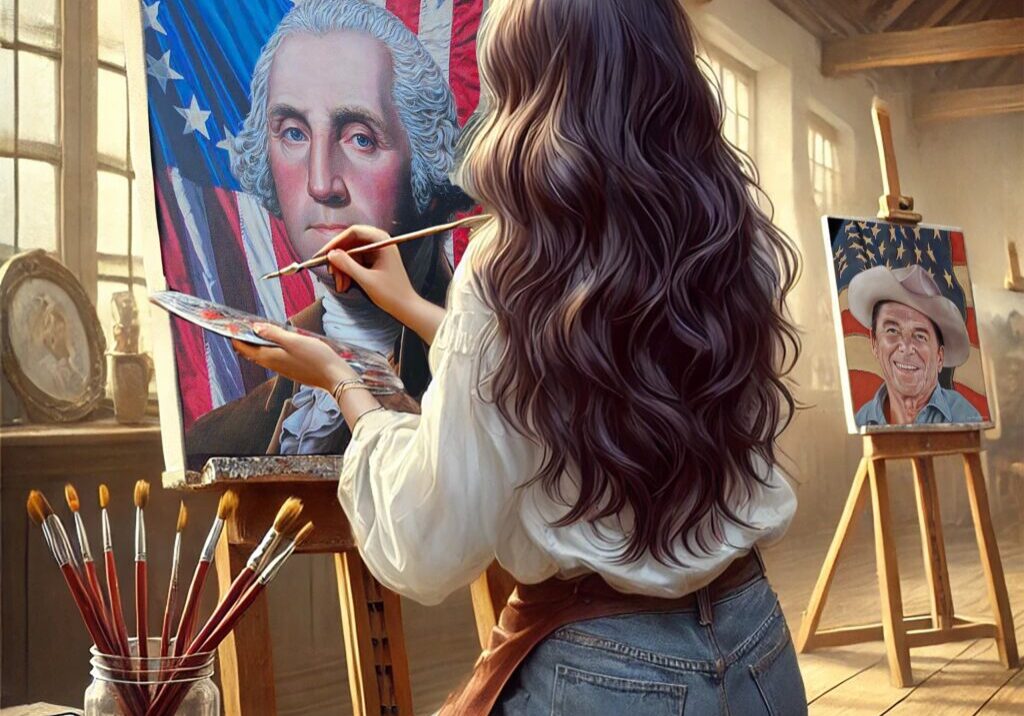
Protest in the Margins: How Layout Became Rebellion
Not all rebellion shouts from the center. Some of the most subversive acts in Revolutionary America unfolded quietly – in the margins. In the way text hugged the edge of a pamphlet, or how columns ran unevenly across a broadside.
As a painter, I’m drawn to these choices because they speak through design, not just language. When I began rendering the mural’s Unity section, I found myself thinking constantly about space – how it’s filled, how it’s left blank, and how those decisions carry meaning. Revolutionary printers were making those same choices, and their layouts told stories the words alone couldn’t. Margins are often treated as silence. But in Revolutionary print, margins were noise. They were sometimes crammed with handwritten notes, editorial commentary, or last-minute calls to action.
At other times, they were left blank as a form of tension – deliberately sparse to amplify the gravity of what sat at the center. In either case, the layout wasn’t accidental. It was a choice. And that choice often reflected resistance. Many colonial broadsides featured long, justified columns – blocky structures designed to evoke order and authority. But the revolution wasn’t orderly. And printers began breaking that grid. Paragraphs would slope. Columns wouldn’t align.
A word like “TAXES” or “BLOOD” might be dropped mid-page in a size far larger than the rest, suspended in a void of white space. That layout was protest. It disrupted expectation. It called the eye where the reader didn’t expect to look. And suddenly, the margin was no longer a frame. It was the front line. In painting, layout is everything. You can lead the eye gently – or jolt it. You can compress space to create intensity or let it breathe to build suspense. As I approached scenes like the Liberty Tree, the Tea Party, and the Committees of Correspondence, I wasn’t just placing figures. I was building a visual argument. I thought about how colonial printers layered columns, wrapped text around bold headlines, and let negative space vibrate with meaning. In several parts of the mural, you’ll notice empty zones – benches with no occupants, gaps between bodies, windowpanes left open. These are my margins. And like those of the old broadsides, they’re not empty. They’re charged.
One of the most poignant examples of margin-as-message appears in protest handbills from the 1770s. Instead of burying grievances in long paragraphs, some printers floated them across the page in fragmented bursts – one line per grievance, spaced apart as if each thought needed room to breathe. These layouts invited the reader to slow down. To confront. To feel. I echo this technique subtly in the mural: three protest signs in one vignette are each tilted at a different angle, spaced irregularly. They don’t shout in unison.
They speak independently, held together only by visual rhythm. It’s not chaos – it’s collective dissent. The other strategy printers used was crowding. Some broadsides pressed type so close to the paper’s edge that it felt like the words were pushing outward, trying to escape the page. There’s something visceral about that – text as pressure, as confinement, as revolt. I’ve mirrored that energy in scenes where bodies feel tightly packed, heads craned in different directions, sleeves overlapping. The composition becomes uneasy by design. These are the visual equivalents of the overloaded margin. And then there were footnotes. The quiet rebels. The whispered asides at the base of the page.
Revolutionary printers sometimes buried incendiary comments in small print, trusting the reader to find them. That play between scale and meaning fascinates me. In the mural, I include a child holding a scrap of paper, words too small to read. That moment is a nod to the footnote tradition – the idea that sometimes the smallest marks carry the greatest fire. Ultimately, layout isn’t just how something looks. It’s how it moves. How it breathes. How it challenges. Revolutionary printmakers knew this. They turned columns into barricades. They turned margins into protest sites. They built documents like battlegrounds, where placement was power. As an artist, I stand in awe of that legacy.
Every time I sketch a scene or build a composition, I think about where the center is – and where the protest might be pushing from the edge. Because sometimes, the revolution doesn’t knock at the front door. Sometimes, it slips in through the margins.

